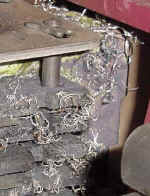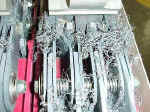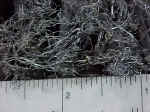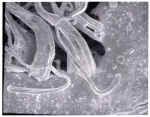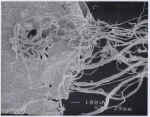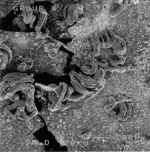| SILVER WHISKER Photo Gallery |
The following Images and Technical Information are
Courtesy of Low Voltage Circuit Breaker The whiskers below are SILVER WHISKERS. They were found growing on primary contacts, finger clusters and other current conductors of circuit breakers in switchgear at pulp recycling mill. The current carrying parts are made of silver-plated copper. Most of the whiskers are made of silver with 1-3 % of copper. Just in two months after previous cleaning, the whisker grows up to several inches (6-8 cm) long and up to 0.04 in (1 mm) thick. Major environmental factor to initiate the growth is relatively low concentration of Hydrogen Sulfide (H2S). As soon as a thick enough layer of silver sulfide has been formed, metal filaments start to grow virtually everywhere but most intensely in locations usually having elevated temperature while electrical units are energized. The surface of the whiskers long exposed to atmosphere is contaminated with silver sulfide. The growth eventually leads to catastrophic thermal failure.
See Also Dr. Chudnovsky's Technical Paper: Degradation of Power Contacts in Industrial Atmosphere: Silver Corrosion and Whiskers", 48th IEEE Holm Conference on Electrical Contacts 2002 NOTE: The growth mechanism of SILVER WHISKERS is NOT believed to be analogous to Tin and Zinc Whisker formation. Nevertheless, whiskers formed on silver- coated contacts in a sulfur-rich environment pose a serious reliability hazard. |
